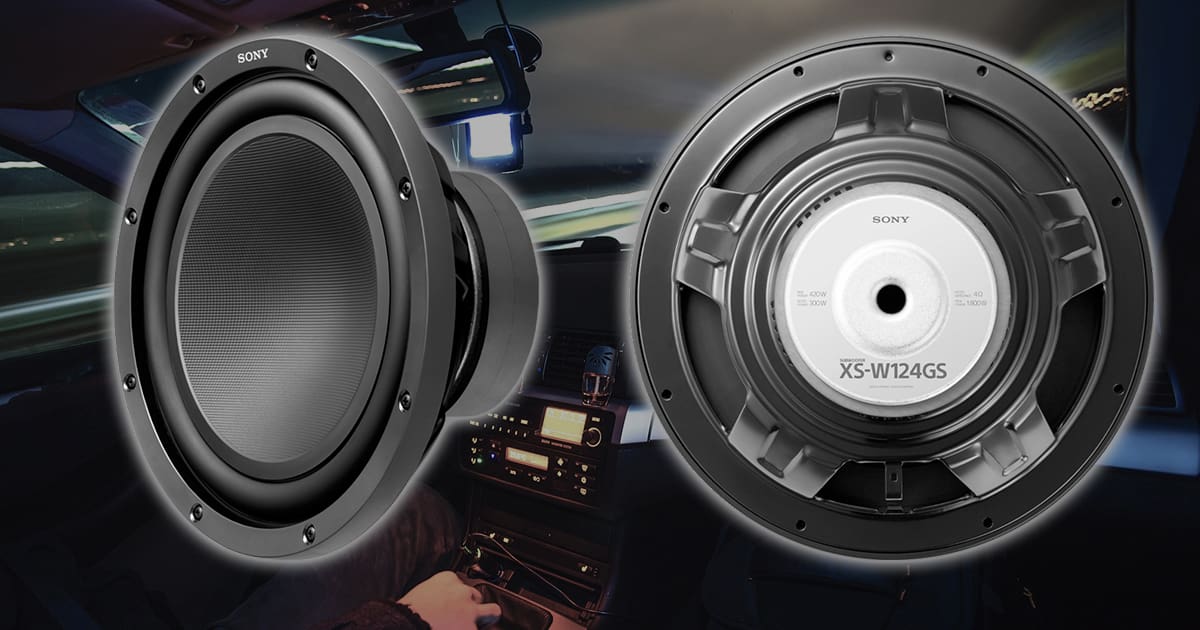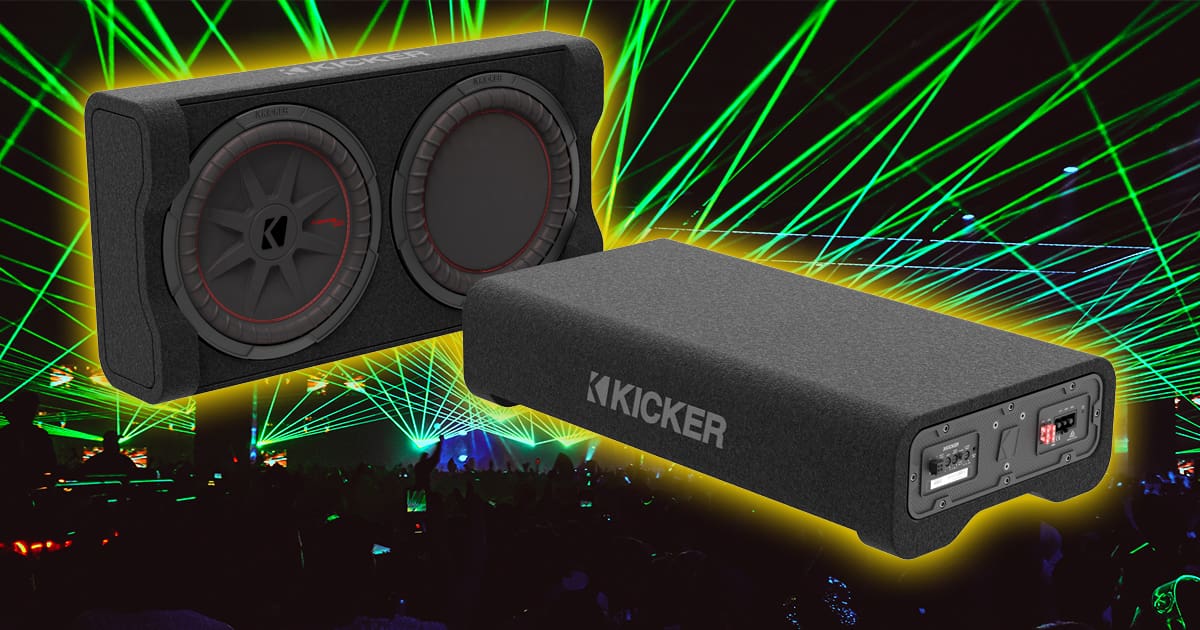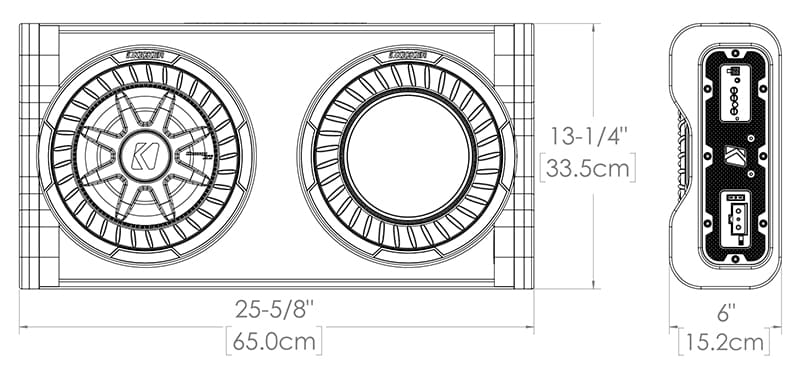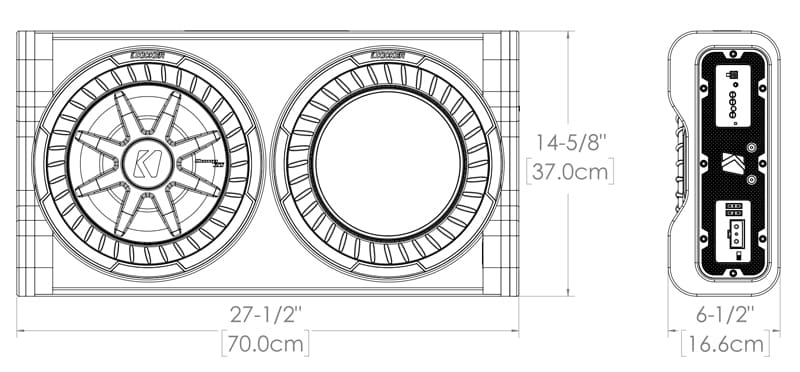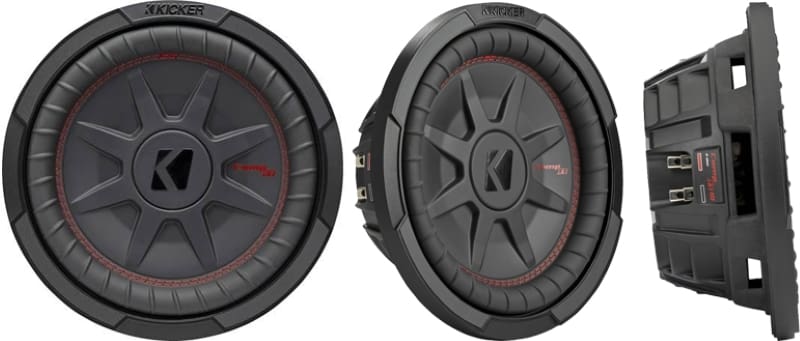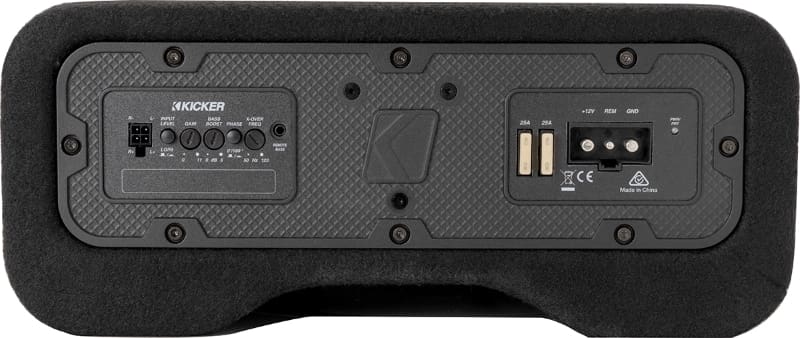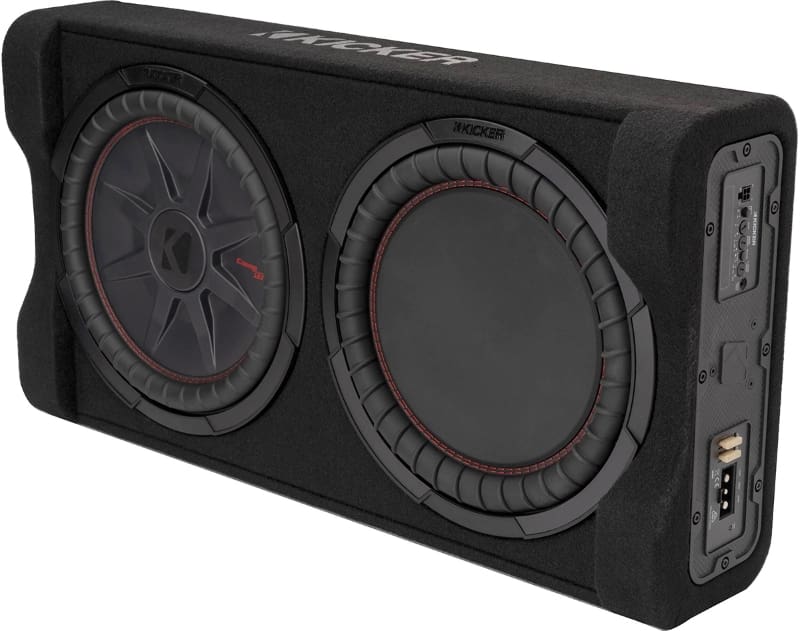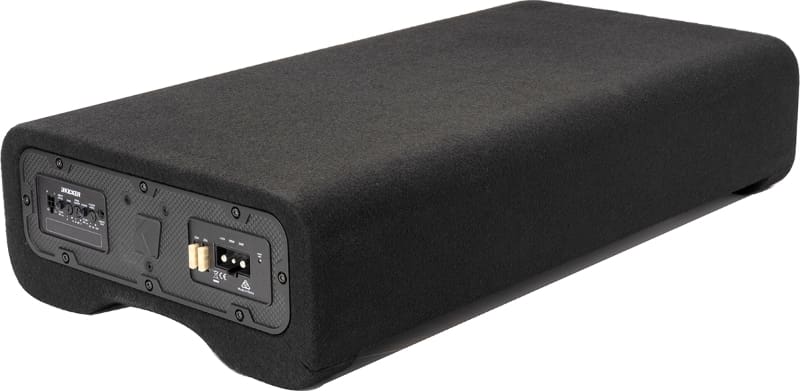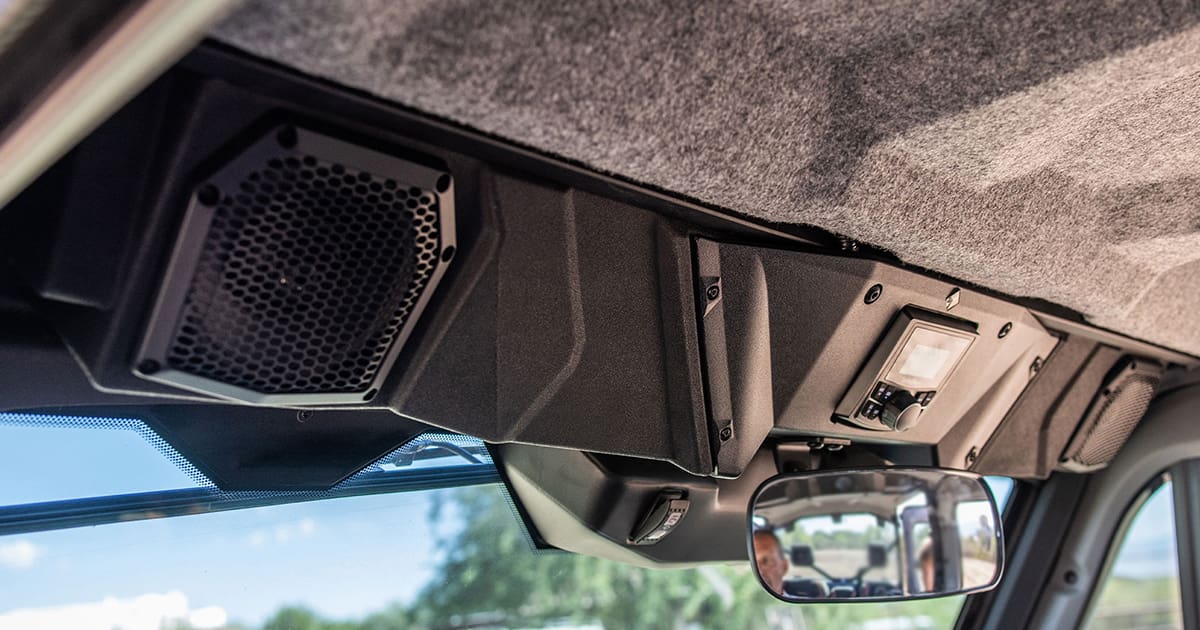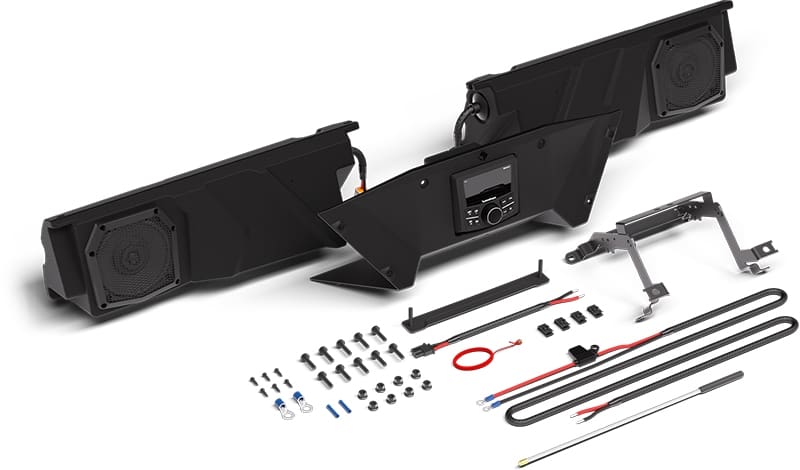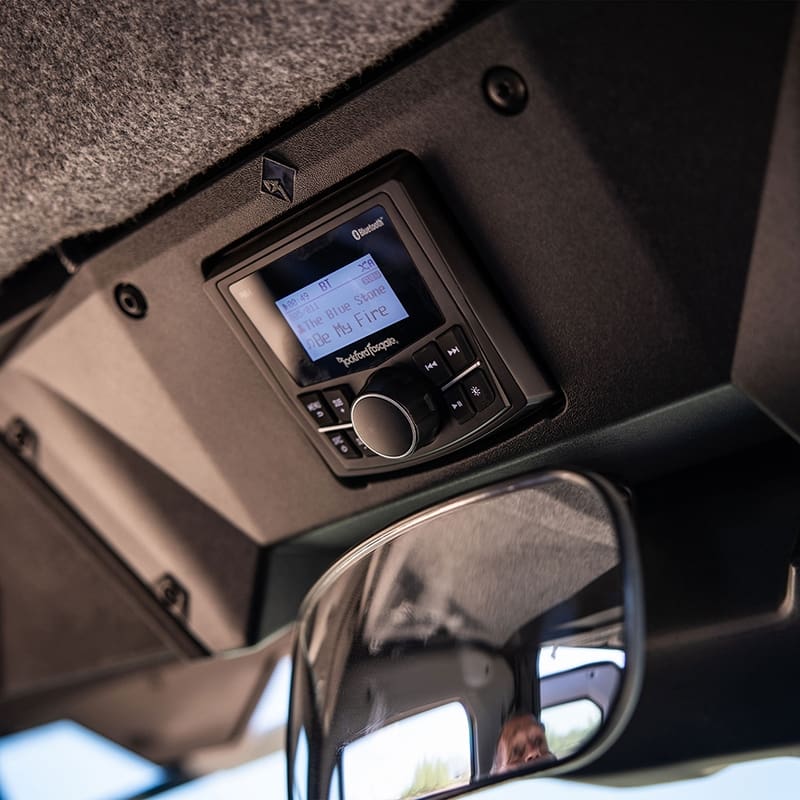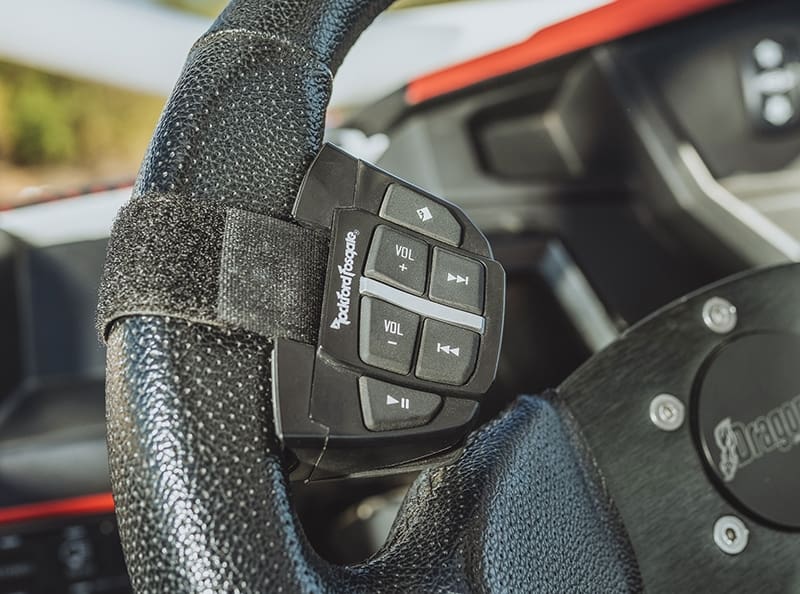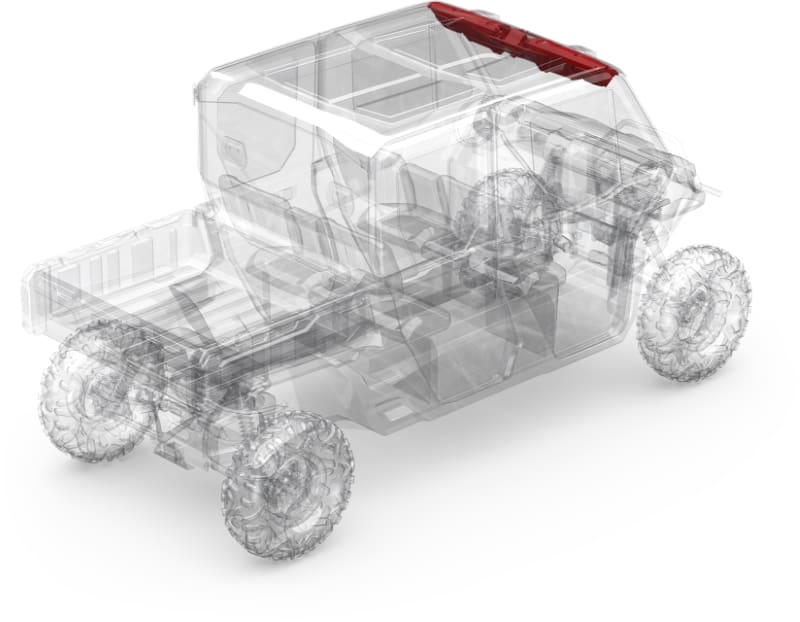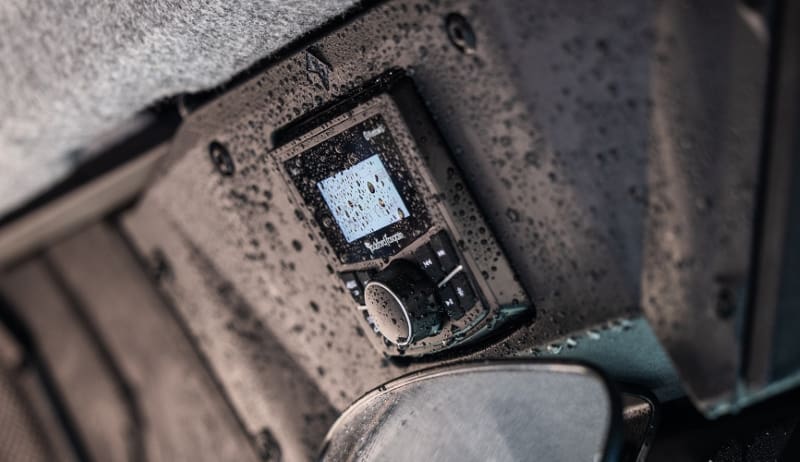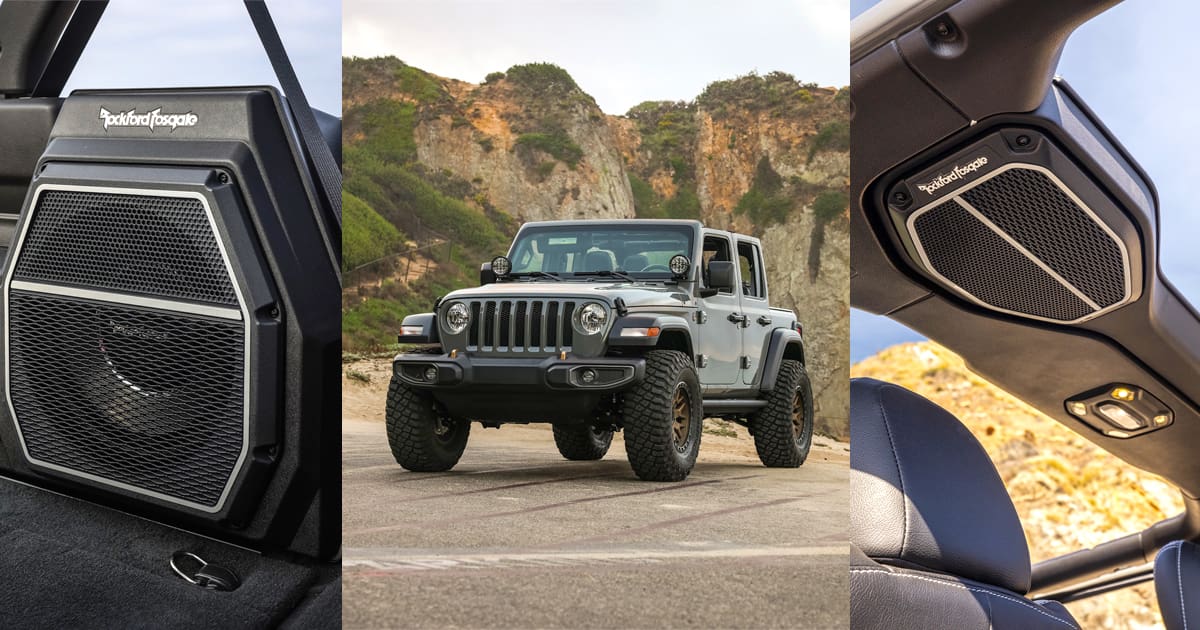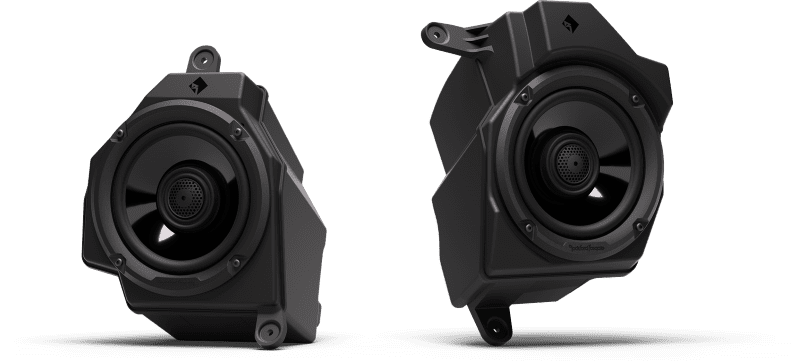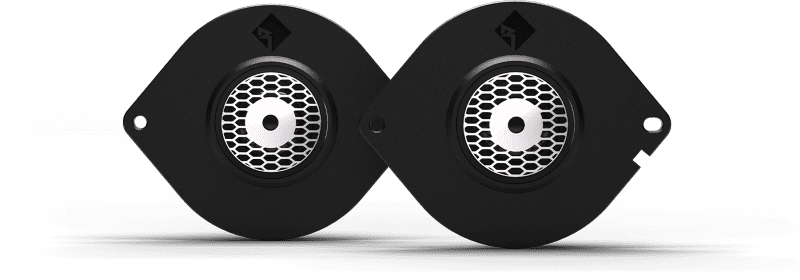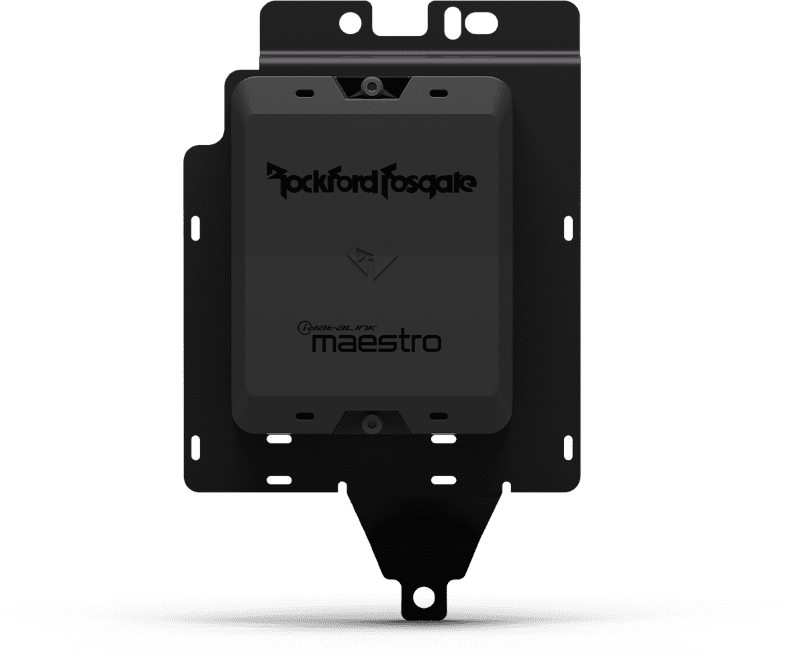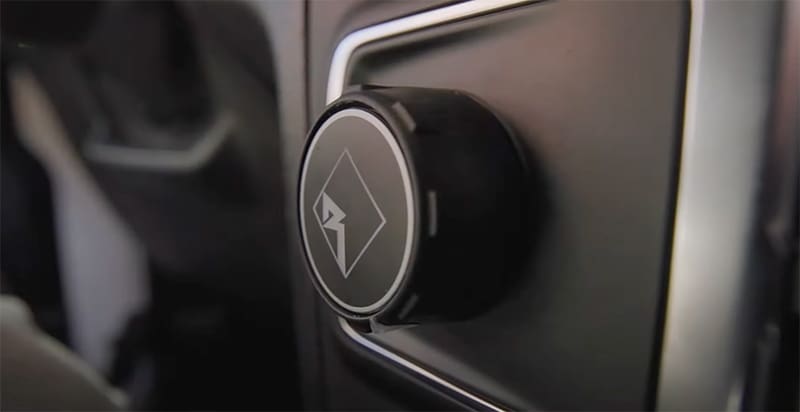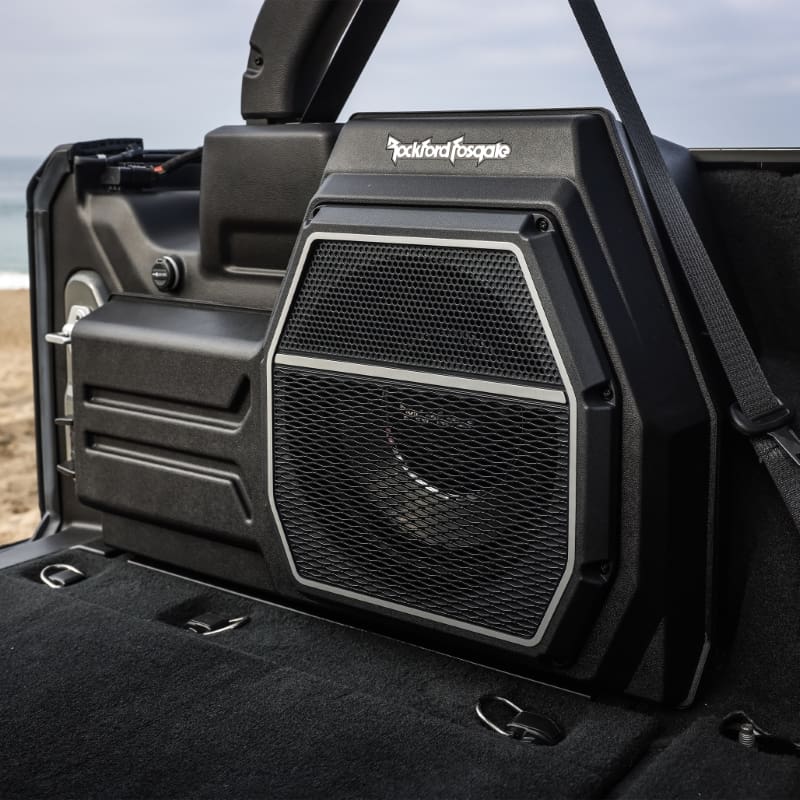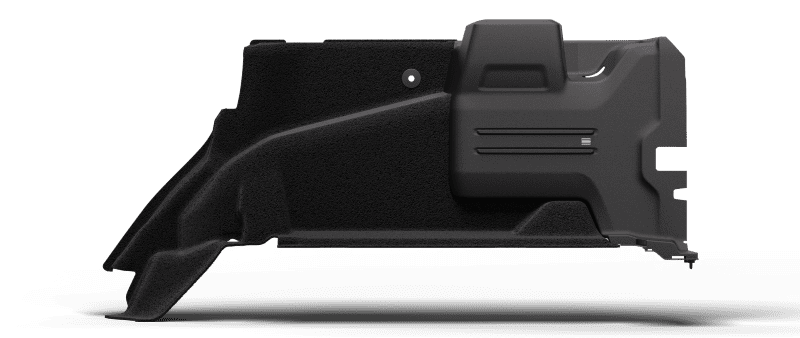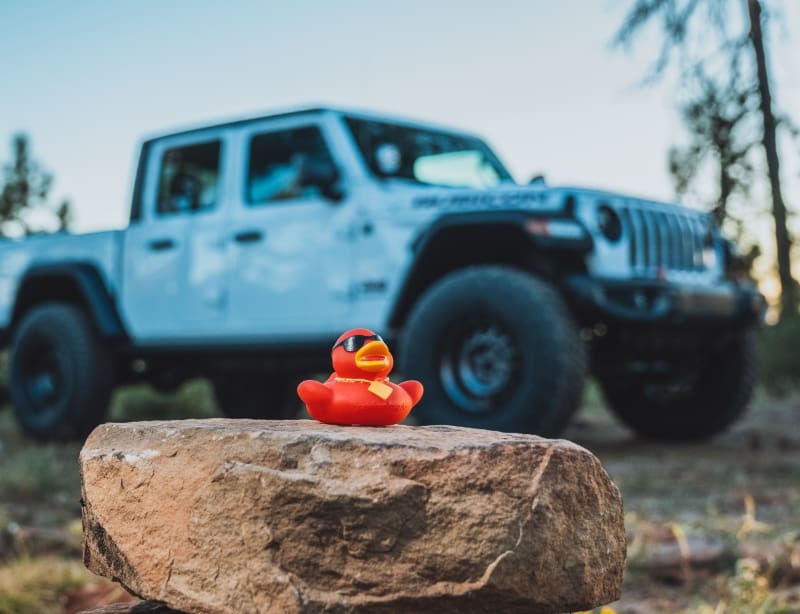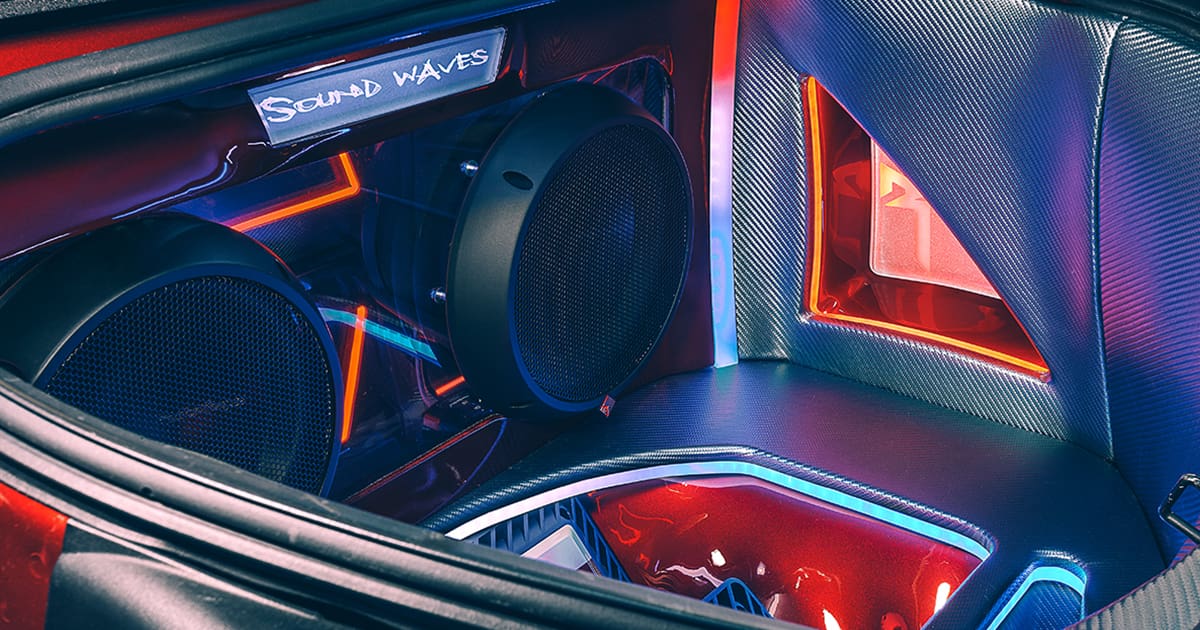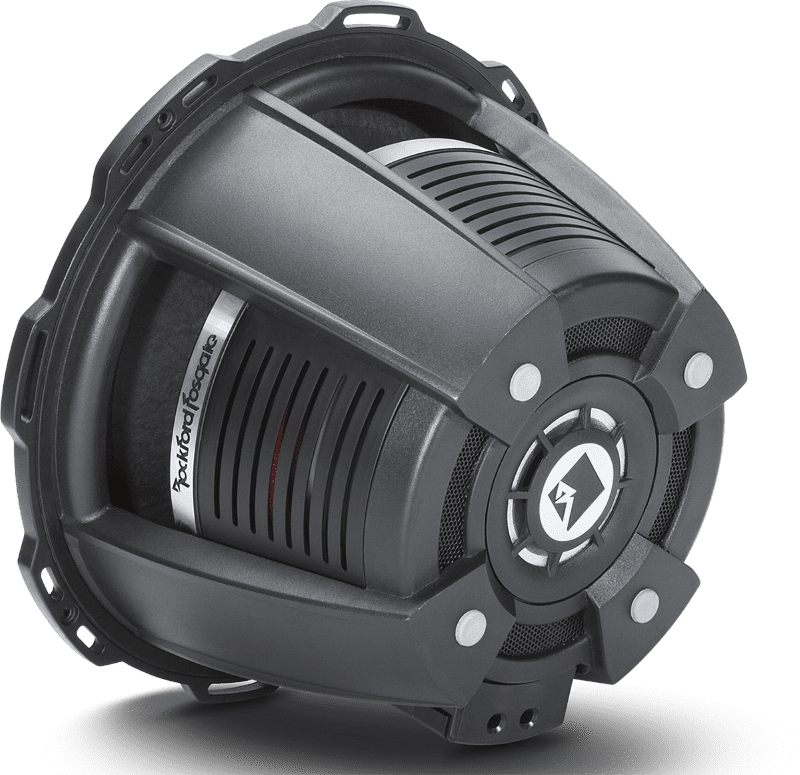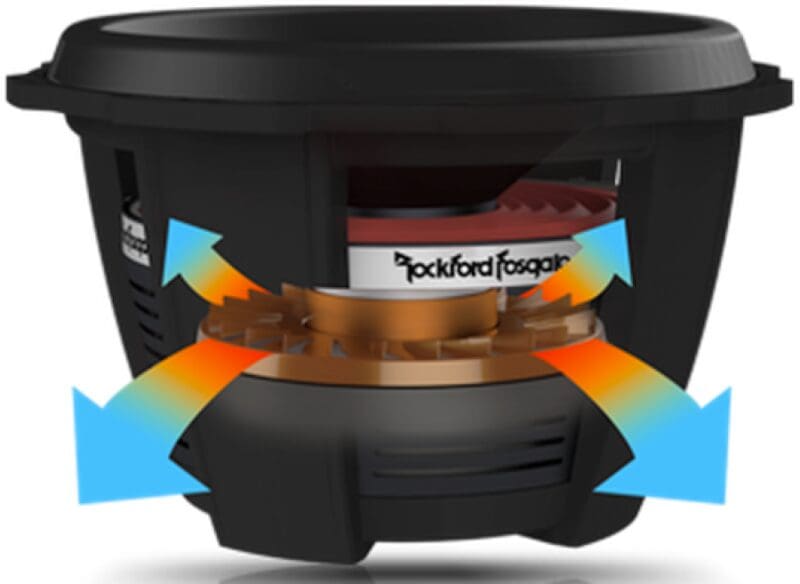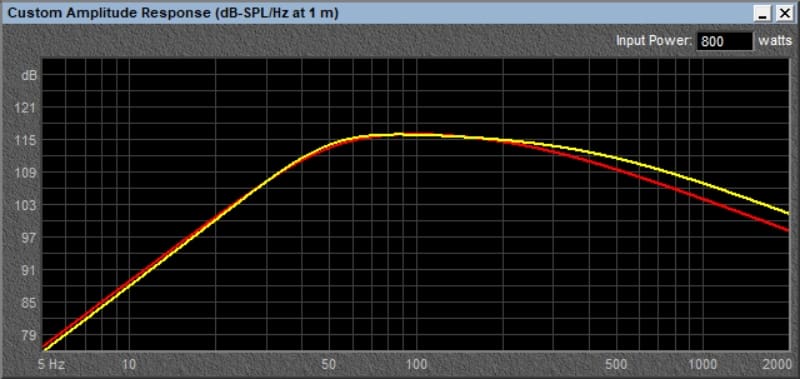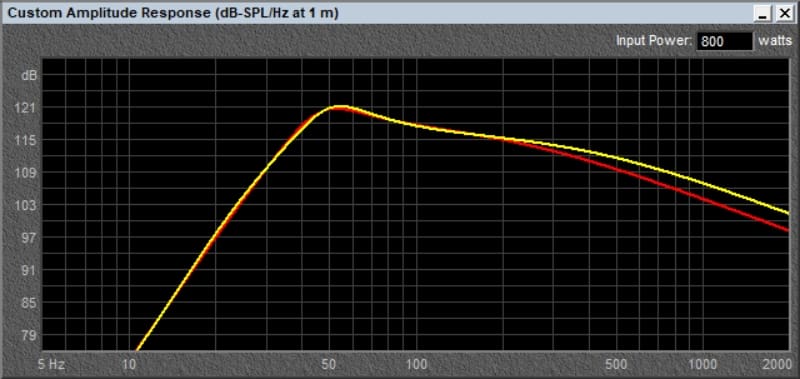Although talking about a trunk full of high-performance subwoofers powered by big amplifiers is fun, Sony knows that many people want a more cost-effective bass upgrade for their cars and trucks. On the heels of their entirely new Mobile ES amplifiers, source units, speakers and subwoofers, Sony has launched the latest iteration of the GS series speakers and subwoofers. This Product Spotlight will look at the 12-inch XS-W124GS and 10-inch XS-W104GS car audio subwoofers.
Features of the Sony XS-W124GS Subwoofer
The 12-inch (30-cm) XS-W124GS and 10-inch (25-cm) XS-W104GS subwoofers feature five-spoke, heavy-gauge stamped steel frames. Each spoke has an embossed element to add stiffness and rigidity. The frames also feature integrated vents below the spider mounting ledge. These vents allow heat to escape from the voice coil and motor assembly and prevent pressure from building up in the spider at high excursion levels. This design feature offers direct benefits regarding increased power handling, reduced power compression and improved linearity.
The motor assembly at the base of the chassis features a pair of ferrite magnets for good efficiency. The T-yoke has a cooling vent in the center, serving the same purposes as the vents in the frame. Heat can escape from the motor, and pressure won’t build up under the dust cap. The result is an additional reduction in thermal compression and reduced distortion at high volume levels.
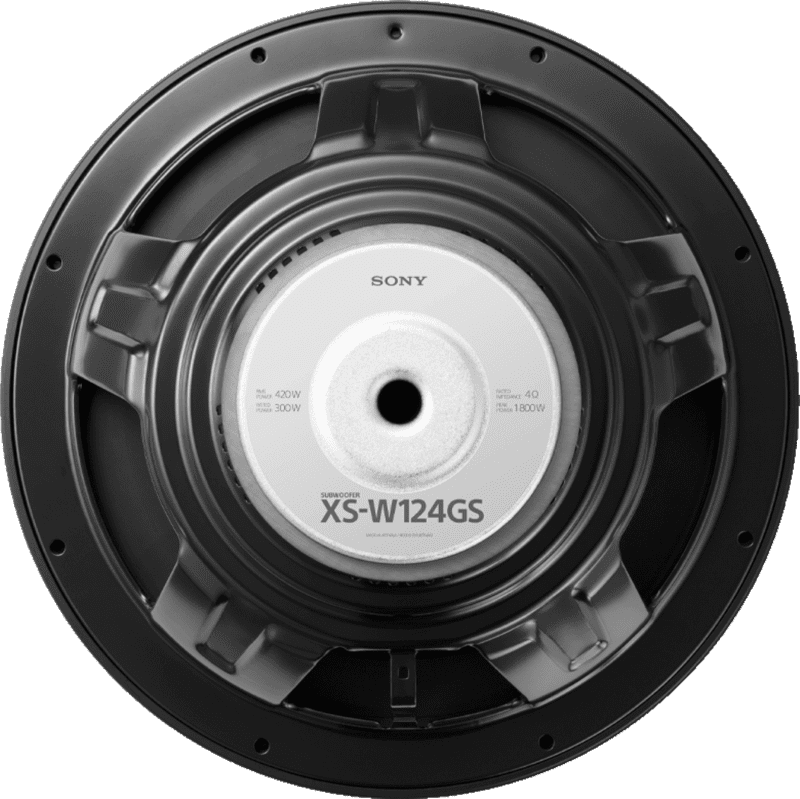
Each subwoofer features a pair of progressive-rate spiders attached to the cone assembly to the basket. These spiders are a feature that Sony has brought from the Mobile ES drivers. The spiders provide the necessary cone control and compliance while keeping everything centered. Sony chose moderately stiff spiders to give the drivers a higher Qts value, which translates to improved output efficiency. Tinsel leads are sewn to the spider so they won’t hit the cone and cause unwanted noises at high output levels.
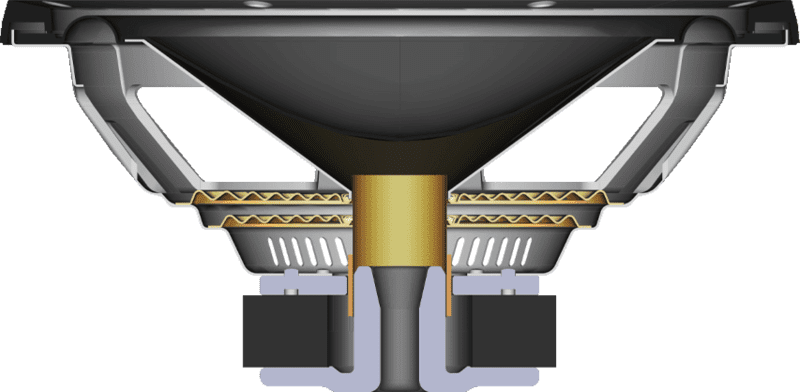
Sony GS Series Subwoofer Moving Components
Both GS series subwoofers feature a rigid paper cone bonded to the voice coil former. You can see in the cutaway image that the upper spider has a reinforcing collar at the base of the cone that strengthens the joint to the voice coil former and spider to improve reliability. A full-size parabolic dust cap made from injection-molded polypropylene attaches to the surround to form the cone assembly’s face. A rubber surround serves as the upper compliance for the woofer cone. Rubber lasts much longer than foam so these woofers will sound great in your car or truck for many years. A custom-tooled trim ring adorns the outer edge of the subwoofer to give it a tidy appearance.
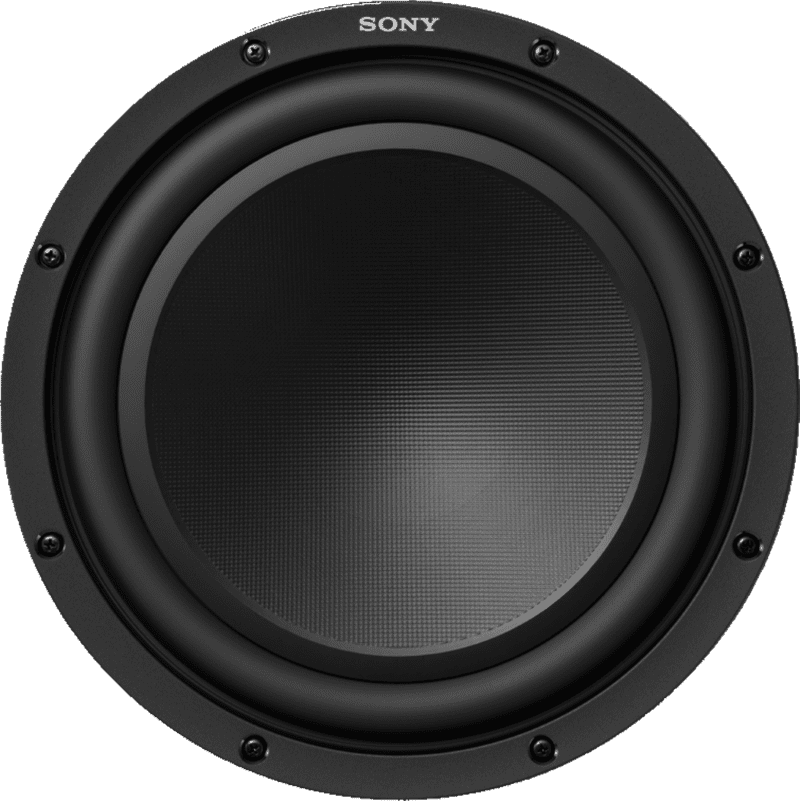
XS-W124GS Physical Dimensions and Driver Specifications
The XS-W124GS subwoofer has an outside diameter of 13 1/8” (332 cm) and requires a mounting hole with a diameter of 11 1/8” (280 cm). The mounting depth is 5 3/4” (143.4 cm), but your installer will want to leave some room for the vent in the T-yoke. Sony rates the XS-W124GS as capable of handling 300 watts of power using the IEC 60286-5 standard and 420 watts using the ANSI/CTA-2031 standard. Peak power handling is 1,800 watts.
Regarding Thiele/Small parameters, the driver has a resonant frequency of 31.9 ohms, an equivalent compliance value (Vas) of 49.194 liters and a Total Q (Qts) of 0.724. As mentioned, the moderately high Q-value will help increase efficiency and output. Suggested enclosures are 0.91 cubic foot for a sealed design and 1.16 cubic feet tuned to 37 hertz for bass reflex applications. The graph below shows the predicted free-field response of the two enclosures, with the driver receiving 420 watts of power.
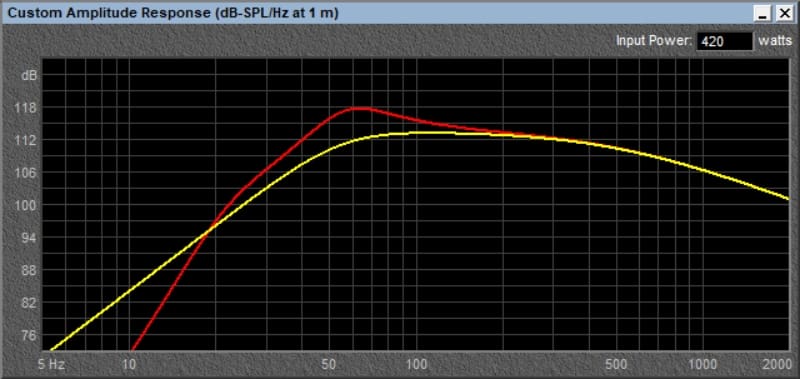
XS-W104GS Physical Dimensions and Driver Specifications
The 10-inch XS-W104GS has an outer diameter of 11 inches (279 mm), requires a mounting hole with a diameter of 9 1/4 inches (234 mm) and requires 5 1/8 inches (129.8 mm) of depth. Rated power handling is 300 watts continuous and 350 watts using the ANSI/CTA-2031 standard. Peak power handling is 1,500 watts.
The 10-inch subwoofer has an Fs of 30.9 hertz, an equivalence compliance of 36.47 liters and a Total Q of 0.505. By way of enclosures, Sony suggests an acoustic suspension design with a volume of 0.88 cubic foot or a bass reflex enclosure with a volume of 0.91 cubic foot tuned to 38 hertz. Given the similarity in suggested enclosure volumes, we’d go with the bass reflex design and enjoy the increased efficiency.
Sony backs the new 10- and 12-inch GS series subwoofers with a three-year warranty against manufacturing defects and workmanship issues. This generous warranty doesn’t mean you can hook one to a 1,000-watt amp or clip the daylights out of a 400-watt amp and melt the voice coil, then expect to get a new subwoofer.
Upgrade Your Car Audio System with Sony GS series Subwoofers
If you’re looking for an affordable, high-quality subwoofer from a company that stands behind its products, drop into a local authorized Sony car audio retailer today. Ask about the new GS series subwoofers like the XS-W124GS we looked at here. They can match the driver to an enclosure and suggest an amplifier that will perform great. Adding bass to your car stereo is one of the best upgrades you can make. With the Sony GS subwoofers, great sound doesn’t have to cost a small fortune. You can find an authorized Sony Car Audio retailer near you using their dealer locator tool. Also, follow Sony on Facebook to stay up-to-date with their latest product releases.
This article is written and produced by the team at www.BestCarAudio.com. Reproduction or use of any kind is prohibited without the express written permission of 1sixty8 media.
